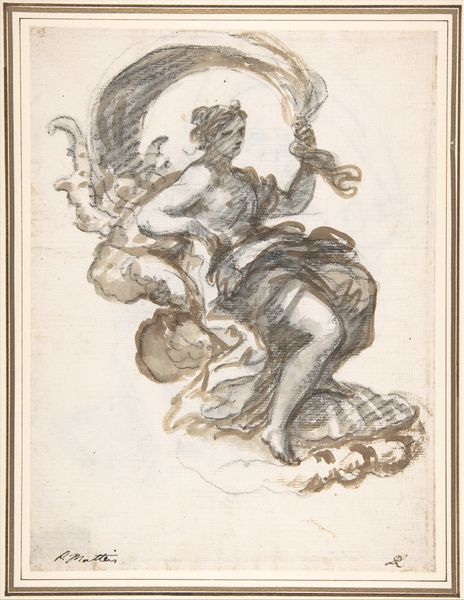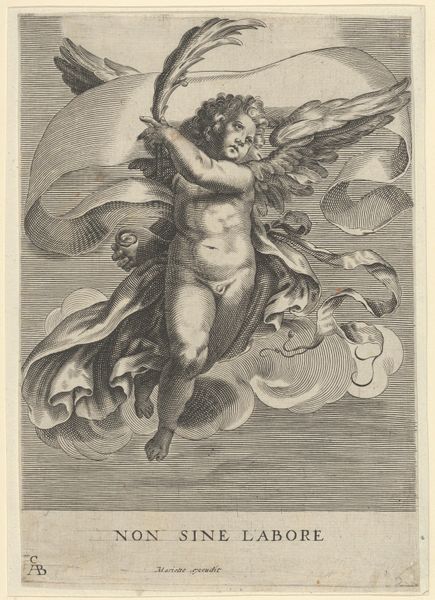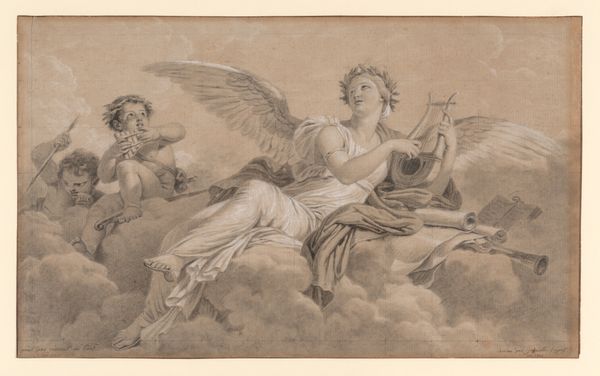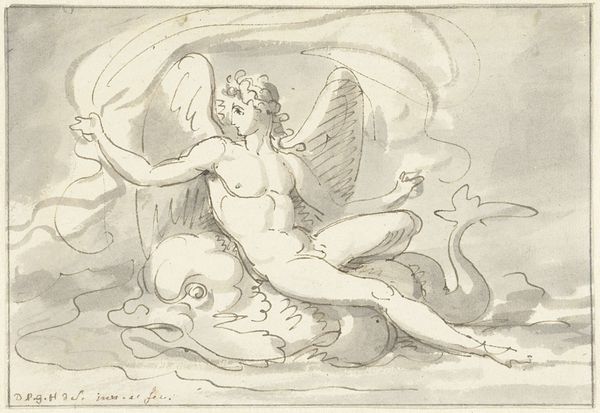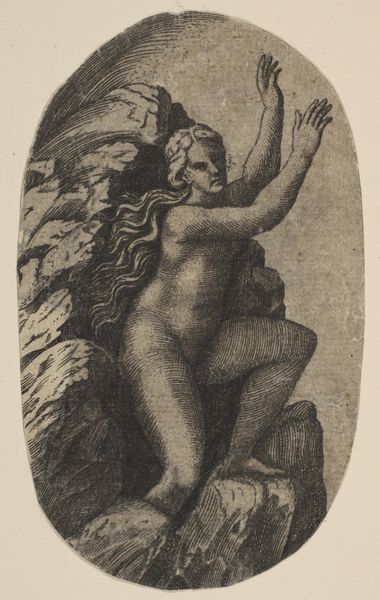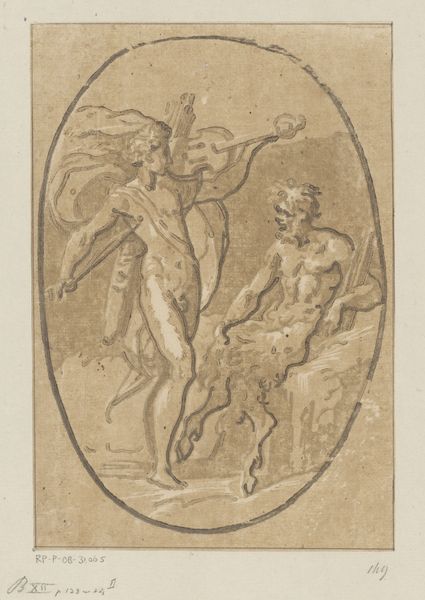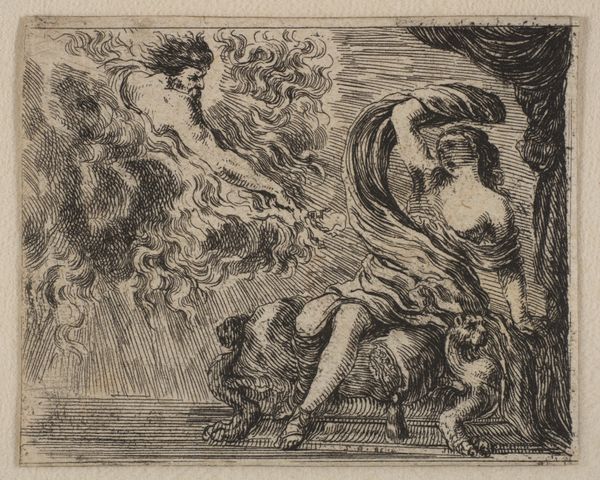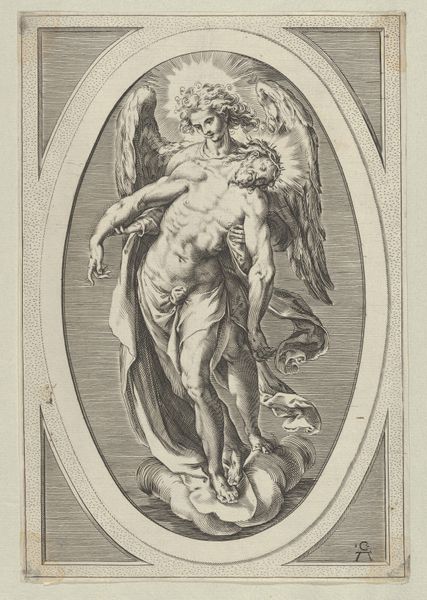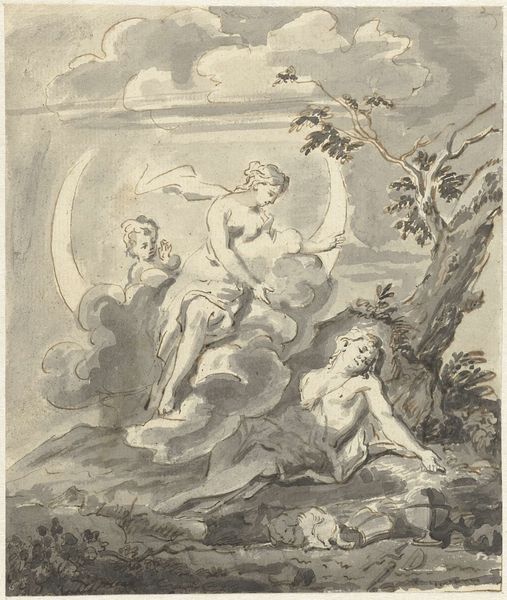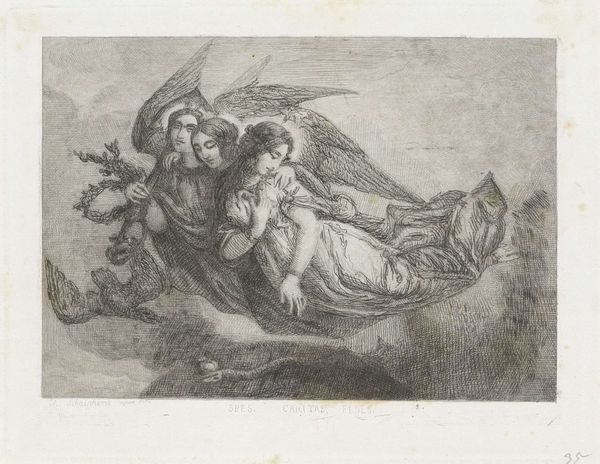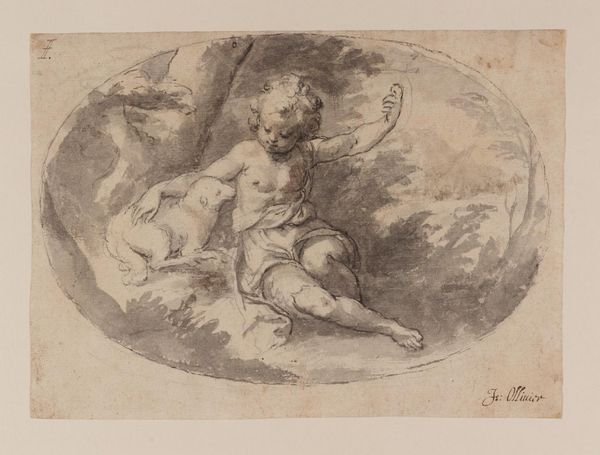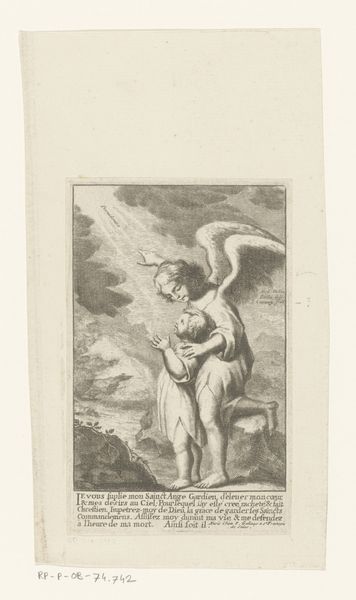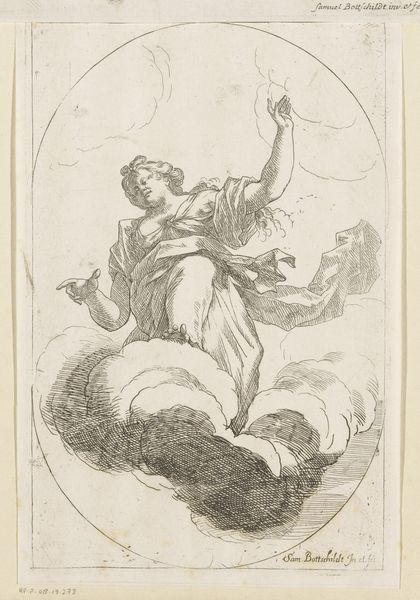
#
toned paper
#
pencil sketch
#
charcoal drawing
#
charcoal art
#
coloured pencil
#
coffee painting
#
underpainting
#
portrait drawing
#
watercolour illustration
#
watercolor
Dimensions: height 76 mm, width 103 mm
Copyright: Rijks Museum: Open Domain
Editor: This delicate drawing, "Ceres," from the 17th century and currently residing in the Rijksmuseum, seems to be crafted with toned paper, pencil, and watercolor. There's a subtle quality to it, and a distinct classical feel. What aspects of its materiality stand out to you? Curator: The blending of pencil, charcoal, and watercolour immediately catches my attention. These weren't always seen as 'high art' materials in the 17th century, were they? Drawings, particularly studies like this one, were often considered preliminary to the "real" art of painting. Considering its context, does this undermine traditional notions of skill and the hierarchy of art forms at the time, revealing a different kind of artistic labour? Editor: I see what you mean. It blurs the line between a sketch and a finished piece, challenging the value placed on different stages of art production. Do you see social commentary embedded in its composition as well? Curator: Certainly, thinking about Ceres as the goddess of agriculture. The depiction using these seemingly "humble" materials--watercolor, pencil, toned paper--can itself be interpreted as an acknowledgement of the labour of the everyday, of tilling the earth. The materiality directs our attention to the land, and its management in early modern Europe. It speaks of a tangible reality often veiled by grand narratives. Does analyzing art through its production value deepen your understanding of its period and society? Editor: Absolutely. Considering the materials shifts the focus from just aesthetics to the process, and it grounds the artwork in the realities of its time, connecting artistic choices with labor practices. I hadn't considered how the choice of materials alone could provide social commentary! Curator: Exactly. That is the power of Material Analysis; it gives artwork tangible connections to everyday human lives.
Comments
No comments
Be the first to comment and join the conversation on the ultimate creative platform.
